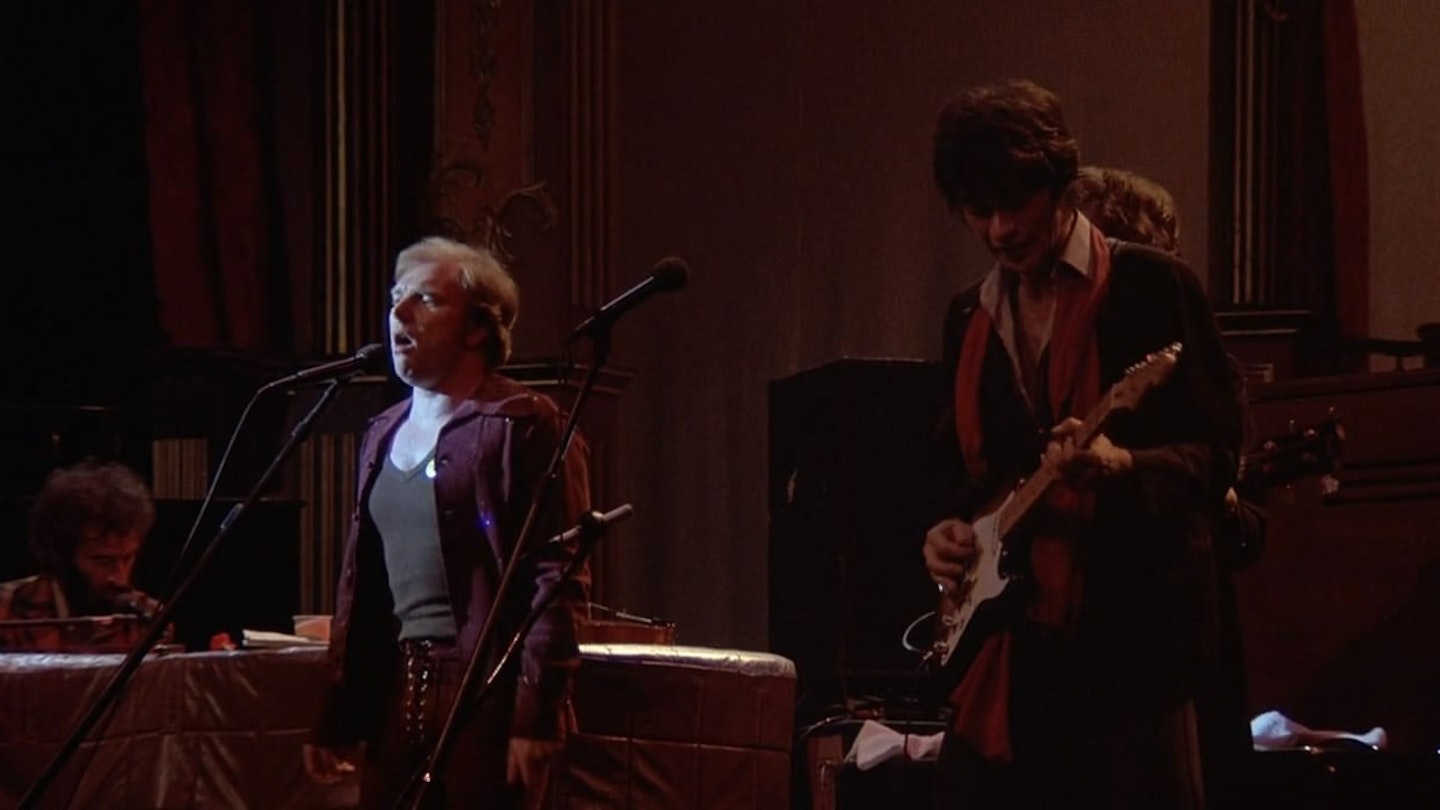They were rock's ultimate 'musical melting pot', a group whose mystique and musicianship came from 16 years on the road, their legendary role as Bob Dylan's band, and a mythic repertoire that fused the rural and traditional with the urban and cutting edge.
So The Band's farewell concert at San Francisco's Winterland on Thanksgiving Day, 1976 - when they were joined in an exhaustingly thrilling performance by a staggering guest line-up of their influences, friends and admirers - became an end-of-an-era event.
As beautifully captured by director Martin Scorsese (and now restored for DVD in brilliant picture and sound), it is probably the greatest of concert films, and one which occupies an intriguing position in Scorsese's own body of work.
The songs in The Last Waltz - interspersed with interviews and anecdotes - represent a tapestry of 20th century music, from pure blues (giant Muddy Waters singing I'm A Man) to the Brill Building (Neil Diamond), the Brits (Eric Clapton), a Beatle (Ringo), a Stone (Ronnie Wood), cult heroes (Dr. John) and former employers (Hawkins and Dylan).
Band favourites abound in the gig - The Night They Drove Old Dixie Down, Shape I'm In, Up On Cripple Creek. But Scorsese memorably uses an MGM sound stage to highlight signature song The Weight with gospel greats The Staples, country gem Evangeline with Emmylou Harris, and the Last Waltz Theme, played on traditional instruments.
Visually, The Last Waltz was prepared meticulously, with storyboards and a script using song lyrics for camera and lighting cues. Production designer Boris Levens (West Side Story, The Sound Of Music, New York, New York) borrowed La Traviata trappings from the San Francisco Opera as a classy setting for musicians' musicians who were the antithesis of spectacle or flash.
Director of photography Michael Chapman (Taxi Driver, Raging Bull) bathed them in the warm glow of classic theatre lighting that is dramatic and timeless. The seven-man camera team included cinematographers Vilmos Zsigmond and Laszlo Kovacs, with just one hand-held camera discreetly on stage, capturing everything without intruding on the mood.
